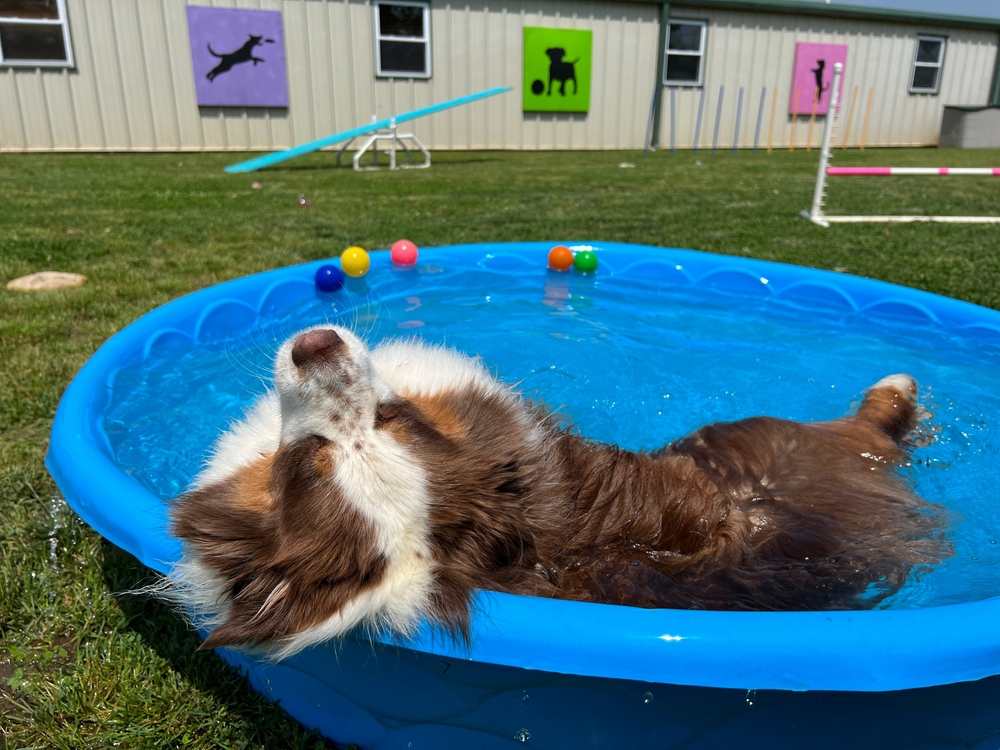Protecting Your Pets In the Summer Heat

As temperatures soar during the summer months, the well-being of our beloved pets becomes a growing concern. Many pet owners enjoy spending time outdoors with their animals, but what may feel like a warm, sunny day to us can be dangerous—even deadly—for our furry companions. Unlike humans, pets have different ways of regulating their body temperature and often suffer silently until it’s too late. Understanding how heat affects your pets and taking preventive measures can help ensure they stay comfortable, healthy, and happy during the hot months. This guide explores essential strategies for keeping pets safe in the summer, highlighting signs of heat-related stress and providing actionable advice tailored to the unique physiology of animals.
The Impact of Heat on Pets
Pets, especially dogs and cats, do not sweat in the same way humans do. While we release heat through our skin by sweating, pets primarily cool themselves by panting and, in the case of dogs and cats, through limited sweat glands located in their paw pads. This makes it much harder for them to regulate body temperature, which is why they are more susceptible to heatstroke. Small animals like rabbits and guinea pigs are particularly vulnerable because of their limited ability to dissipate heat.
Knowing how heat affects your pets begins with recognizing their unique physiological responses. For example, brachycephalic breeds—dogs and cats with flat faces such as Bulldogs, Pugs, and Persians—are at higher risk because their anatomy restricts airflow, making panting less effective. Additionally, pets with thick fur coats, older animals, and those with underlying health issues can become overheated more quickly than others.
Signs of heat exhaustion or heatstroke in pets include excessive panting, drooling, lethargy, vomiting, diarrhea, and collapse. In severe cases, pets may experience seizures or fall into a coma. Recognizing these warning signs early is crucial to intervening and preventing serious health consequences. If a pet shows any signs of heat stress, immediate cooling and veterinary care are essential.
Creating a Cool and Safe Environment
One of the most effective ways of keeping pets safe in the summer is by ensuring they have access to a cool and shaded environment. Whether your pet spends most of its time indoors or outdoors, controlling the ambient temperature can make a significant difference in their well-being. Indoors, use fans or air conditioning to maintain a comfortable climate, and make sure pets have a cool, quiet place to rest away from windows or direct sunlight.
For outdoor pets, shade is non-negotiable. Trees, covered patios, and pet-safe tents provide much-needed relief from the sun. However, shade alone is not enough if temperatures climb excessively. Outdoor animals should have unrestricted access to fresh, clean water at all times. Bowls should be checked frequently, as water can evaporate quickly or become warm and unappealing in the heat.
Hydration plays a vital role in regulating body temperature. Dehydrated pets are less able to manage the stress of high temperatures, increasing the risk of overheating. To encourage hydration, consider placing multiple water sources around the house and yard, adding ice cubes to bowls, or offering pet-safe frozen treats made from diluted broth or fruit.
Another important factor to consider is timing. Avoid walking or exercising pets during the hottest parts of the day, typically between 10 a.m. and 4 p.m. Instead, opt for early morning or late evening outings when temperatures are cooler. Not only does this reduce the risk of heat exhaustion, but it also protects your pet’s paws from hot surfaces.
The Hidden Dangers to Animal Paws
An often-overlooked aspect of summer heat and pet safety is the effect of hot surfaces on animal paws. Asphalt, concrete, sand, and even wooden decks can become scorching hot under the sun, leading to painful burns or blisters. The phrase “summer heat and animal paws” takes on literal significance when you consider that pavement temperatures can soar to over 140°F (60°C) on a 90°F (32°C) day.
To test whether a surface is too hot for your pet, use the “five-second rule.” Place the back of your hand on the pavement for five seconds. If it’s too hot for your hand, it’s too hot for your pet’s paws. Protective measures include walking your pet on grassy areas, using booties or paw wax, and staying on shaded paths. Some pet-safe balms can also be applied to create a barrier between paws and hot surfaces, although they should be used in conjunction with other precautions.
Paw injuries from hot surfaces can cause limping, licking of the paws, and visible burns. If you notice any of these symptoms, rinse the area with cool water and contact your veterinarian for further advice. Never use ice directly on the injury, as extreme cold can damage the tissue further. Prevention is always better than treatment, so prioritize routes and surfaces that minimize exposure to heat.
Managing Exercise and Activity in the Heat
Exercise is crucial for a pet’s physical and mental health, but during summer, activity should be approached with caution. Even high-energy pets need modified routines to avoid the hazards of overexertion in hot weather. Adjusting the intensity, duration, and timing of play can help reduce the risk of overheating.
Rather than long walks or runs, consider shorter, more frequent outings during cooler times of the day. Always carry water and a portable bowl to provide hydration breaks. Choose shaded parks or wooded trails over open, sun-exposed paths. For dogs that enjoy swimming, water-based activities like supervised swims or sprinklers can offer an excellent way to stay active while staying cool.
Indoor games are another great alternative. Puzzle toys, scent games, and interactive play help keep your pet mentally stimulated without subjecting them to heat stress. Cats benefit from laser pointers, feather wands, and climbing structures, while small mammals enjoy tunnels, chew toys, and foraging opportunities.
Be mindful of signs that your pet is becoming overheated during play. Rapid breathing, disorientation, glazed eyes, and refusal to continue are all red flags. If these appear, stop the activity immediately, move your pet to a cool place, and offer water. Never force a pet to continue an activity if they appear reluctant or tired, especially in the heat.
Traveling and Outdoor Events with Pets
Summer is a popular time for road trips, barbecues, and festivals, many of which we want to share with our pets. While it can be enjoyable to bring your pet along, it’s vital to plan ahead to ensure their comfort and safety. Car rides in particular pose a major risk. Temperatures inside a parked car can reach dangerous levels in just a few minutes, even with the windows cracked. Leaving a pet in a car, even briefly, can be fatal and is illegal in many places.
When traveling with pets, ensure the vehicle is well-ventilated and air-conditioned. Provide a harness or crate to secure them safely, and bring plenty of water, food, and familiar items like blankets or toys to reduce anxiety. Make frequent stops to allow for bathroom breaks and exercise in shaded areas.
Outdoor events pose their own challenges. Crowds, loud noises, and unfamiliar environments can cause stress and overheating. If you’re attending a pet-friendly gathering, look for shady spots, provide water, and monitor your pet closely for signs of distress. Consider leaving pets at home during particularly hot days or high-energy events, where the risk of heat-related illness outweighs the benefit of companionship.
If you’re vacationing, research pet-friendly accommodations that offer climate-controlled environments. Some hotels and rentals provide pet amenities, such as cooling mats or enclosed play areas. Apps and websites dedicated to pet travel can help identify suitable locations and services, making your trip safer and more enjoyable for everyone involved.
Conclusion
Keeping pets safe in the summer requires awareness, preparation, and a proactive approach to heat management. By understanding how heat affects your pets and implementing strategies that prioritize their comfort and health, you can enjoy the season together without unnecessary risk. Whether it’s choosing the right time for a walk, protecting sensitive paws, or planning heat-conscious travel, every small decision contributes to your pet’s well-being. Summer should be a time of joy and adventure—for both you and your four-legged companions.
Need a Small Animal Hospital in Pauls Valley, OK?
At Williamsburg Small Animal Hospital, we are dedicated to ensuring the well-being of your pets, especially during the scorching summer months. If you have any concerns about keeping your furry friends safe and healthy in the heat, don’t hesitate to reach out to us. Our team of experienced veterinarians is here to provide you with personalized advice and top-notch care. Contact us today to schedule an appointment or to learn more about our services. Let’s work together to keep your pets safe and happy all summer long!
